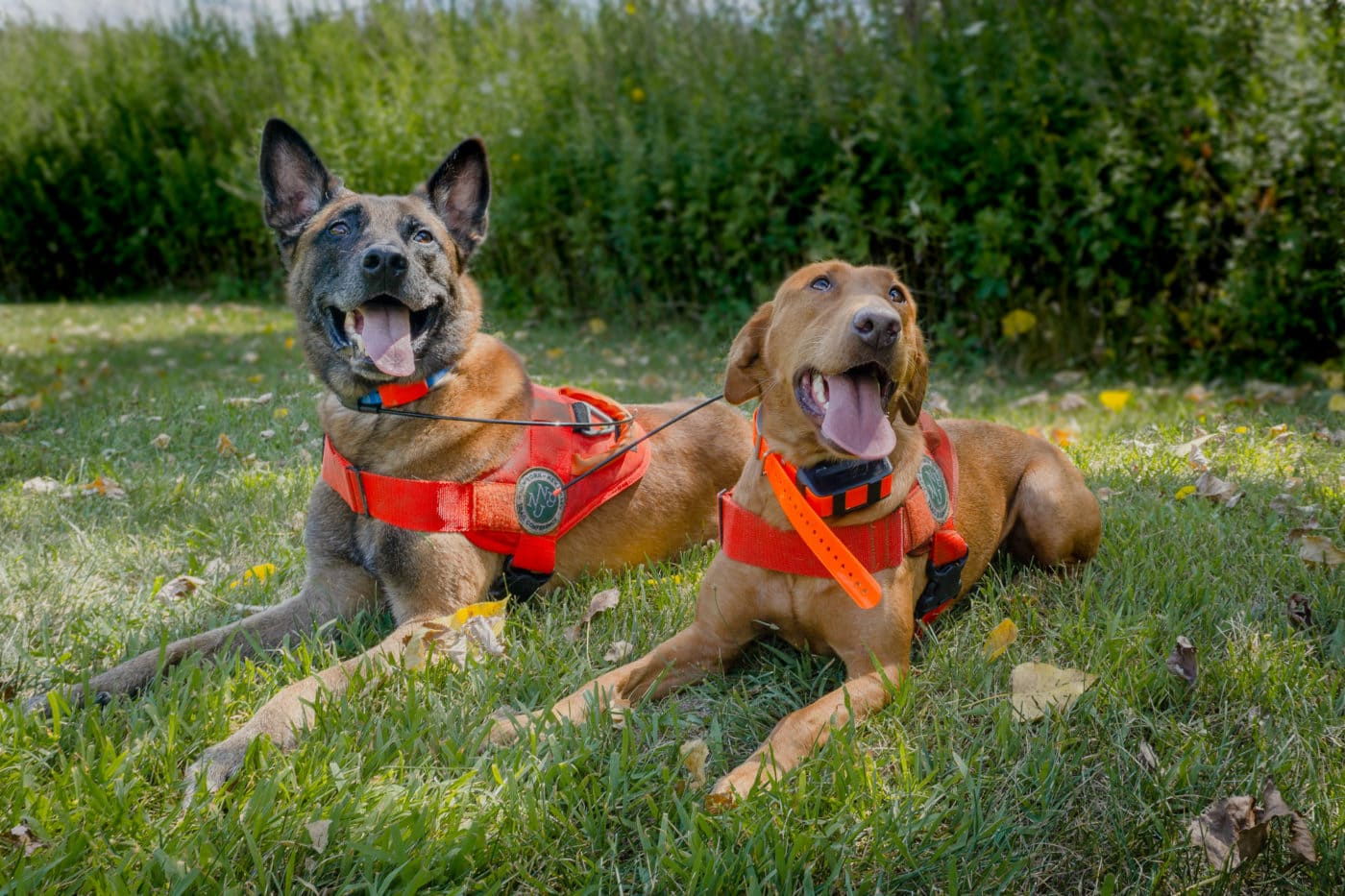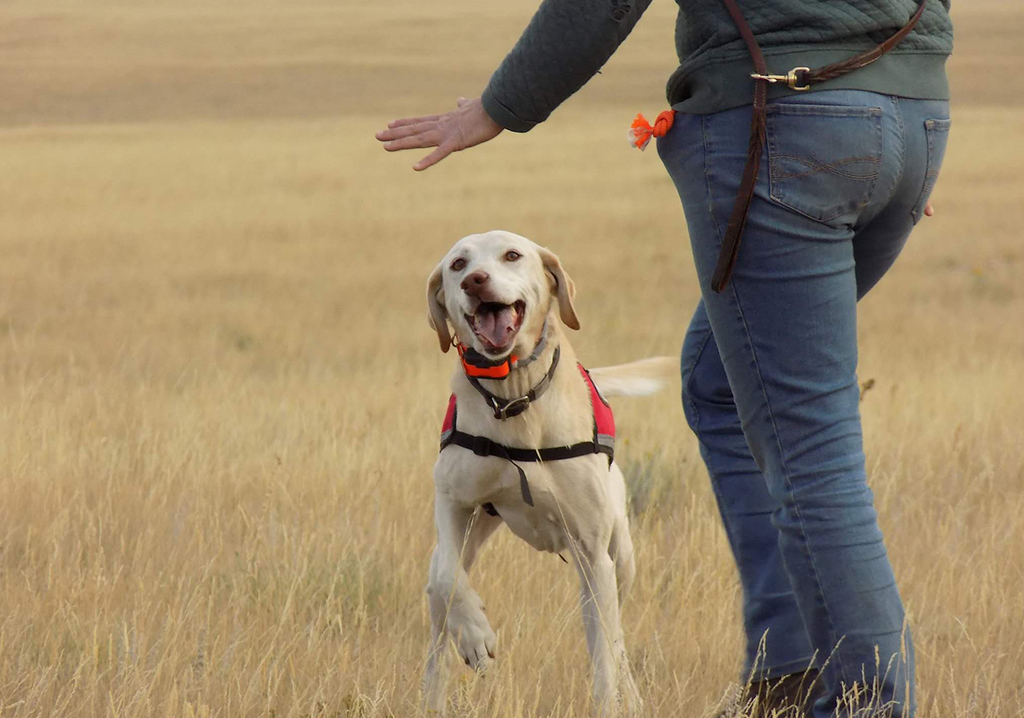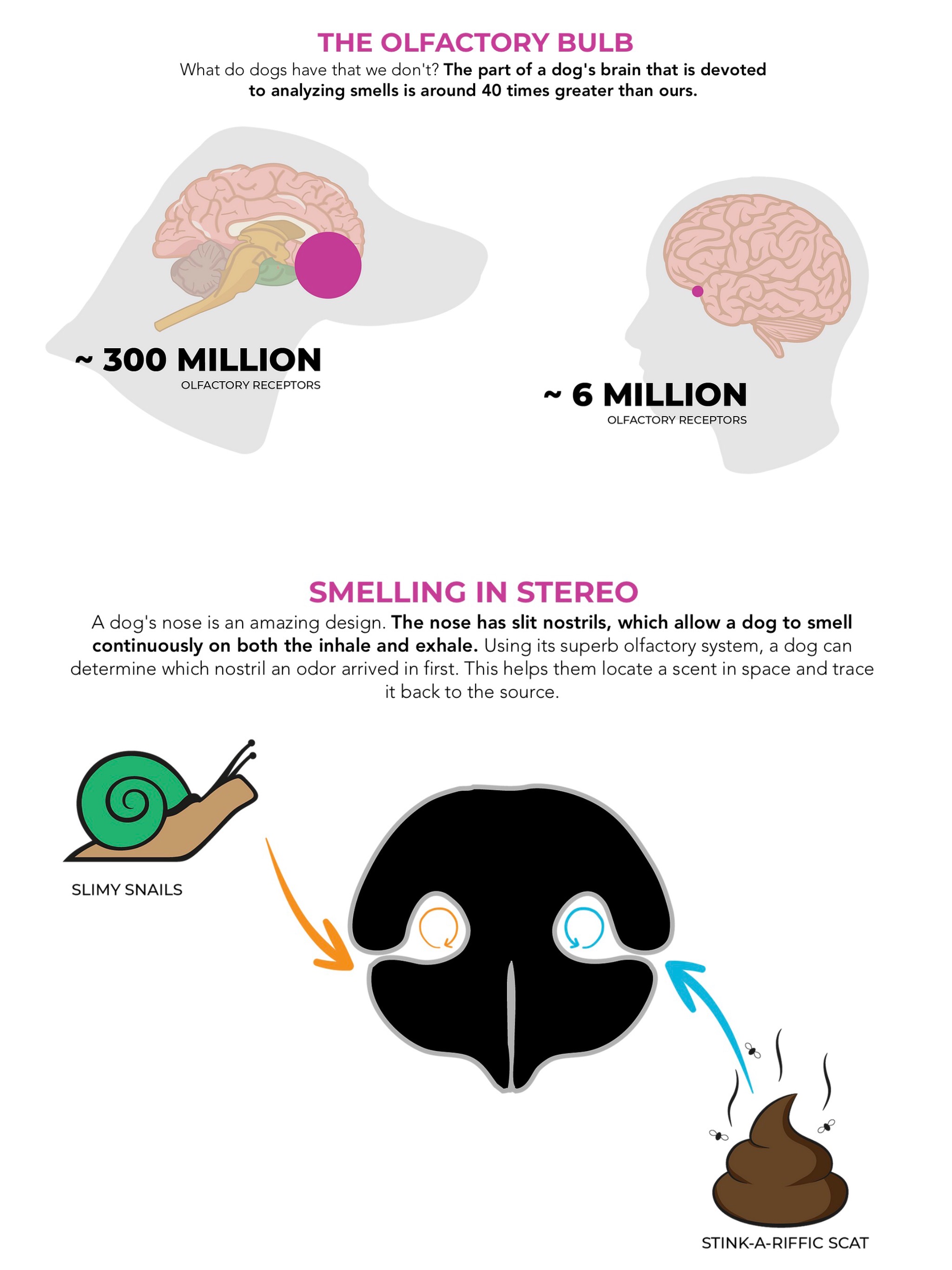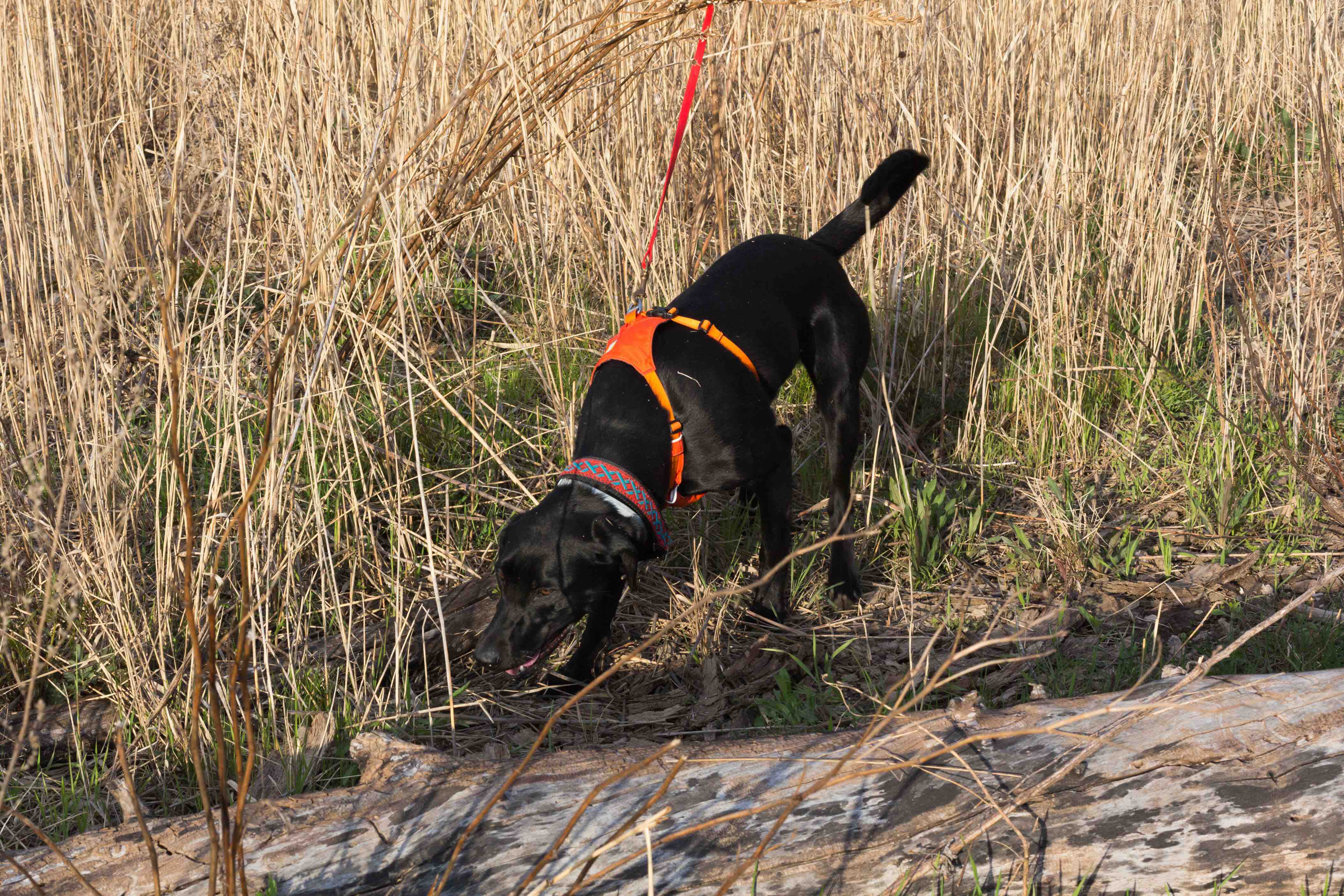- Inspiring People -
- 6mins -
- 494 views
Scent-detectives: How Conservation Dogs Are Sniffing Out Species Humans Can’t See
When biologists can’t spot them and technology won’t detect them, harmful invasive plant and animal species can’t escape the nose-power of these detection dogs.
Detection dogs are the best method for locating invasive plants and endangered animals
Canine scent detection is a proven asset for our world today. From detecting human illnesses, aiding search and rescue efforts, or assisting law enforcement, the canine nose is an invaluable tool. Now, evidence is growing that detection dogs are the best method scientists have for locating invasive plants and endangered animals. They’re fast, accurate, and less expensive or cumbersome than technologies such as motion-sensitive cameras. One organisation found that its detection dogs located brown tree snakes five times faster than humans and pin-pointed bobcats nine times more frequently than cameras. Moreover, locating invasive plants over large tracts of land is far easier for a trained dog than a human. — ReasonsToBeCheerful

sniffing out scotch broom and lantern flies
In New York’s Lower Hudson Valley up through Northern New Jersey, Fagen, a seven-year-old Belgian Malinois, and Dia, a three-year-old Labrador retriever, are sniffing their way through a meadow, the authorities in tow. With their noses to the earth, they’re hunting down a dangerous troublemaker: Scotch broom, an innocent-looking yellow-flowered invasive plant that destroys grasslands, poisons animals and fuels forest fires.
“Imagine a plant only an inch tall amongst other plants in places as vast as Harriman State Park or Bear Mountain,” says Joshua Beese, referring to two of the region’s sprawling protected natural areas. “It’s easy to miss, but not to the dogs. They can find invasive seeds hidden under bushes — places you wouldn’t think of going. You’d have to crawl on your hands and knees. And the dogs cover a lot of territory.”
Beese is the Conservation Dogs Program trainer and handler for the New York New Jersey Trail Conference, a volunteer organisation that builds, maintains and protects public trails. He also handles Fagen and Dia, both of whom live with Beese and spend two-to-three hours on the trails with him during mild weather days.
At the seedling stage, invasive plants like Scotch broom are notoriously difficult for humans to spot. But dogs can locate hard-to-find flora and fauna more effectively and efficiently than virtually any human, method or machine in existence. Their handlers then share that information with park managers, trail professionals and the many volunteers who work to rid the area of the intruders.
Fagen and Dia are trained to sniff out not just plants, but animal species as well, like the spotted lanternfly, an invasive insect that threatens both ecosystems and economies — one recent study found that lanternfly infestations could drain $324 million and 2,800 jobs annually from Pennsylvania alone. “These flies excrete a sugary substance that causes mould,” Beese explains. “Winds carry the scent to the next tree. That’s where we (the handlers) come in. The dogs show us the area and we spot the mould with our eyes.”
Joshua Beese was speaking to Michele C. Hollow for ReasonsToBeCheerful

Super-sniffers
A 2010 study published in the journal Invasive Plant Science and Management found trained dogs detect twice the number of invasive plants as human surveyors could observe with their eyes. “They can detect concentrations of some materials at a level of three parts per million, better than the most accurate scientific equipment,” says Nicholas Dodman, professor emeritus at Tufts University and president of the Center for Canine Behavior Studies. “They live in a world of smells that we can barely imagine.”
Dogs have an olfactory lobe that is about 40 times larger than the human equivalent, and at least 800 million smell receptors in their nasal cavity, compared to 12 million in humans. “
They also have a ‘nose within a nose’ called a vomeronasal organ located within the nasal cavity just above the hard palate of the mouth,” says Dodman. He ticks off a list of things dogs can detect via scent: certain types of cancers, low blood sugar in insulin-treated diabetics, impending seizures, malaria, even Covid-19. “So can a dog detect a sought-after plant or other species? Of course they can.”
Dodman’s team once trained a dog to detect a rare species of turtle buried underground so that it could be retrieved and moved away from a construction site.
Source: ReasonsToBeCheerful

Dogs are also being employed to protect threatened pollinators
According to Working Dogs for Conservation (WD4C), invasive species cost the U.S. economy over $120 billion per year. “Detection dogs can be up to 40 times more efficient than human searchers because they can cover large areas and rough terrain,” Hurt says. “They can find invasive plants and endangered species hidden in deep vegetation because of their sense of smell.”
Dogs are also being employed to protect threatened pollinators. Betty White, a two-year-old Labrador retriever, and Ernie, a four-year-old Lab, work and live with Laura Holder, co-founder and executive director of Conservation Dogs Collective (CDC) based in the Midwest.
“Honeybees contribute nearly $20 billion to the value of the U.S. crop production,” Holder says. “And according to a survey from Auburn University, beekeepers across the U.S. lost 40.7 percent of their managed honeybee colonies from 2018 to 2019.”
Holder’s dogs work in CDC’s Pollinator Program, in which dogs like Betty White and Ernie locate bumblebee nests, frass (a fine powdery refuse from perforated wood created by boring insects) and other pollinator targets.
“Not all bees are out in the open pollinating flowers,” Holder says. “That’s where the dogs come in. They’re trained to spot the sweet waxy scent of the hives. The dogs found hives inside evergreen trees, underground and in between planks of plywood.”
“We often don’t see the hives,” Holder continues. “For instance, the hives inside evergreen trees are completely hidden to the human eye. The dogs find them and we tell our partner land and water conservancy organizations who protect them.”
All of the dogs in these programs live with their handlers. “We train almost every day,” Holder says. “Some days, I need a day off more than they do. We work twice a week on detection skills. On their days off, they get to be the family pet. When they’re out in the field, they protect the environment.”
Source: ReasonsToBeCheeful



